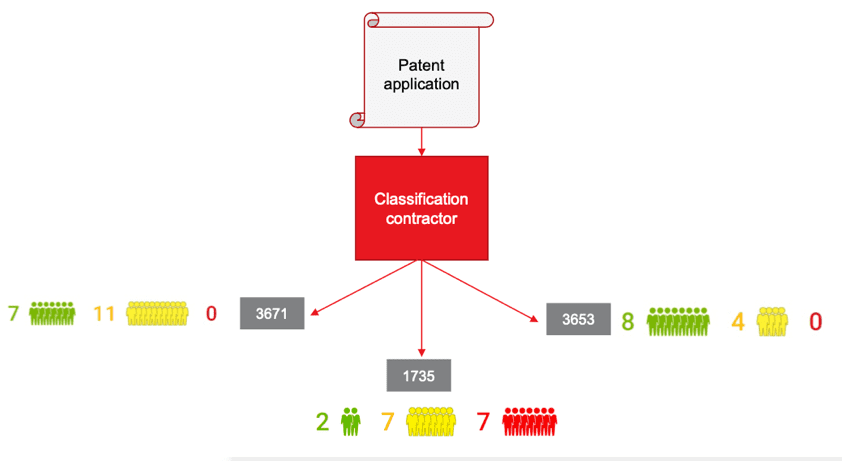Strategic Drafting With Patent Analytics Tools

There is a method to the madness of matching a USPTO patent examiner to each patent application. A lot happens before an examiner is assigned to a newly filed application. The USPTO first considers which team of examiners (called an “art unit”) is best suited to evaluate an application based on the type of invention the application describes, the underlying technological field and how the invention is framed by the drafting attorney. A single examiner is then chosen from within the qualified art unit, and patent prosecution proceeds from there. The importance of understanding what goes on behind the scenes at the USPTO may not be obvious, but knowing why an application winds up on a specific examiner’s desk is a prerequisite to later influencing which examiner will be assigned to your application. By using patent analytics tools with USPTO statistics, patent practitioners have the power to strategically draft their applications to target the most favorable art units.
Art unit statistics and examiner compositions
At the time of filing, many patent applicants and patent practitioners alike fail to consider that all USPTO art units are different. With just a glance at art unit statistics using the LexisNexis PatentAdvisor® patent analytics platform, patent professionals come to understand that art units vary wildly in their allowance rates, prosecution lengths, appeal statistics and other critical metrics. Moreover, each art unit is unique in its proportions of “difficult,” “moderate” and “easy” examiners.
The key to better performance throughout the patent process is acknowledging that a single application could be appropriately assigned to any one of several art units. By using patent analytics tools to identify an application’s potential art unit matches and which of those art units have the most applicant-friendly examiner proportions, patent professionals can then use analytics to draft applications to improve the odds that they will be reviewed by applicant-friendly examiners.

Aiming for a better art unit
The language, terminology and framing used in drafting an application all influence which art unit the USPTO will choose as the best fit for evaluating the application. Before filing, using patent analytics tools, patent practitioners are able to analyze portions of their application drafts using the Tech Center Navigator (formerly PathWays™) tool to determine which art units are likely to be assigned to the application. PatentAdvisor analytics also communicate which of those art units provide users with the best opportunity to receive a statistically favorable examiner. If a user’s draft is more likely to be assigned to a difficult group of examiners, PatentAdvisor can suggest the language that should be included and omitted from the document draft to help guide it to an art unit with a more favorable composition of examiners.
Understanding how art units are paired to applications is more meaningful than many patent practitioners may realize. Because each art unit differs in its relative difficulty, the fate of an application may depend on which art unit is chosen by the USPTO. Patent analytics tools like PatentAdvisor reveal the path an application is likely to take through the USPTO’s process, but patent professionals can then use PatentAdvisor insights to steer their applications in a better direction.
Learn more about PatentAdvisor.
The Tech Center Navigator provides clear direction toward success when drafting patent applications.
For more on patent analytics, read Patent Analytics for Predictions, Performance and Evaluations.
See how Patent Prosecution Analytics Are No Longer Just a Nice to Have and watch the on-demand webinar.

Need more predictability in the patent prosecution process?
Learn how to develop successful IP strategies and proficiently manage patent applications throughout the entire prosecution process using data-driven insights and advanced analytics.
